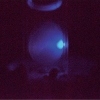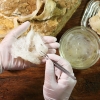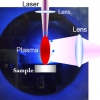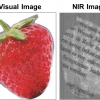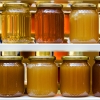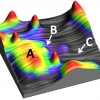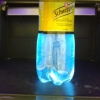Total reflection X-ray fluorescence (TXRF) is a “Cinderella” technique: not widely known but with great potential. The author and other members of the TXRF Workgroup are making strenuous efforts both to spread the word about TXRF and to improve communication within the TXRF community. As Ramón points out, atomic absorption or plasma spectroscopies may be the “go to” techniques for many, but TXRF is worthy of consideration.
Spectroscopy Articles
Pages
A fascinating update on Brillouin spectroscopy, in particular “Brillouin microspectroscopy: in search of the mechanical properties in biological systems well below a wavenumber”. They show that the Brillouin measured elastic modulus clearly varies between regions of a biological sample, even if sometimes only by small amounts. Exactly what this is telling us and for what it is most useful or relevant is currently an area of active debate and remains to be seen.
This article provides a valuable summary of the choice of sample clean-up methods available for the quantification of small molecules in body fluids. What are the key factors? Judy outlines the principal processing methods and provides practical advice on protocol development using quantification of serum testosterone in serum samples as the model compound.
Knowledge of the origin of bones has applications in anthropology, archaeology and forensics; NIR spectroscopy, even with handheld instruments, is showing promise in being able to differentiate bones from different species.
Spectroscopy is widely used in forensics, but the determination of the age of documents was one application I had not considered. With a huge variety of papers and inks available, each with their own ageing profiles, and with such ageing depending on environmental factors, the determination of the age of a document is not straightforward. However, infrared spectroscopy and chemometrics may have the answer.
Jacques Thierie’s article raises a seemingly impossible observation: that in some cases, transparency can exceed 100 %.
Nick Polfer gives an excellent introduction to the recent technique of infrared ion spectroscopy. Ions held in the ion trap of a mass spectrometer can be probed with a tuneable light source, and its photodissociation studied as a function of the photon frequency. Nick believes that the technique will make an impact in small molecule analysis, such as metabolites, drugs and classes of molecules containing many isomers.
Clemens Anklin gives a short history of the commercial and technical development of NMR. From the first measurement of nuclear spin in 1937 by Rabi and his 1943 Nobel Prize to recent developments in small NMR spectrometers and instrument company changes.
In this work we demonstrate the suitability of confocal Raman microscopy for the characterisation of carious dental tissues. Samples of enamel and dentine, presenting carious lesions in different stages of progression, were evaluated by comparing the depolarisation ratio of the PO43– symmetric stretching band at 959 cm–1 in the different tissues. Both line and area scans were performed to gauge these variations. Moreover, the obtained results were compared with the tissues’ behaviour when interacting with ultraviolet radiation, namely the induced fluorescence in some tissues. The depolarisation ratio has proven to be a valuable tool in recognition of demineralisation of both enamel and dentine due to caries. The analyses of the collagen bands in the dentine sample turned out to be more difficult to evaluate due to high fluorescence in the carious region.
Nanomaterials find widespread applications in many fields of science and nanotechnology, especially as catalysts in the chemical, bio-nanotechnology, nano-electronics and pharmaceutical industries. Understanding the physical and chemical properties of nanoscale materials is important, not only because of the fascinating nature of the subject, but also due to their potential applicability in almost every branch of science and technology. Nanostructured materials offer interesting properties, because at the atomic or molecular scale, the physical properties of a material become size dependent due to the quantum confinement and surface states effects.
In this article the question of the certification of calibration samples for the characterisation of advanced thin film materials is addressed within the framework of reliable process control or quality management purposes. Reference measurement techniques can be used in order to address the gap in appropriate certified reference materials (CRMs) for thin film analyses. They allow for qualifying out-of-production samples originating from an operating production line as calibration samples. As a template for this procedure, CIGS [Cu(In,Ga)Se2] layers, that are absorber layers for high efficiency thin-film solar cells, have been used for establishing and validating reference-free X-ray fluorescence (XRF) analysis and Auger-electron spectroscopy (AES) as reference measurement techniques.
Different spectroscopic techniques have been combined to provide additional and complementary information for decades. Increasingly, this is being expanded beyond just two techniques and may include spatial/imaging information as well. All of which bring their own challenges. In “Multimodal imaging of cells and tissues: all photons are welcome”, David Perez-Guaita, Kamila Kochana Anja Rüther, Phillip Heraud, Guillermo Quintas and Bayden Wood report an example of these new approaches. They look at the use of infrared, Raman and X-ray fluorescence spectroscopies to obtain combined imaging data of whole algal cells and discuss how to overcome the challenges.
Dmitry Gakamsky and Anna Gakamsky describe how fluorescence may be used to diagnose cataracts in human eye lenses. Further, it may also be able to grade cataracts and monitor the disease’s progress, which may help discover metabolic and ambient factors that influence the progress of the disease.
Edible bird’s nest (EBN) is a highly valued food, especially in China. Due to this, there is the potential to bulk out the EBN with artificial additives to receive a higher price. This article shows yet another way in which spectroscopy is used to detect adulteration of food and prevent fraud in a quick and cost-effective manner.
We all know how spectroscopy and other analytical technologies have played important roles in detecting fraud and in authentication. Paper collages, or photomontages, are part of the art market that is seeing much interest amongst collectors. It is difficult to detect forgeries just through expertise. The use of NIR imaging offers a number of ways to identify forgeries or authenticate the collage non-destructively; from determining the glue used to the revealing of printing on the back of the pieces or paper, which often have been taken from books and magazines.
X-ray spectroscopy techniques have some advantages over other atomic spectroscopy techniques in the analysis of foods, for instance in not requiring significant sample preparation. Amongst these, TXRF has higher sensitivity and limits of detection in the ng range. The authors look at the analysis of a number of very different foods, including seafood, honey and vegetables.
This article demonstrates the capability of the near-field method to probe polymer microspheres within a protein matrix, and we present the first IRSR photothermal near-field Fourier transform infrared (FT-IR) spectrum from within an individual biological cell, which establishes the feasibility of hyperspectral mapping at sub-micrometre resolution in a practical timescale.
The CAL(AI)2DOSCOPE (Cryogenic Absorption/Luminescence Alignment Independent Alternative Intermittent Detection Optical µSCOPE) is a microspectrometer that was constructed with the aim to facilitate the correlated investigation of absorption and fluorescence emission properties of nanovolumic protein samples under modulatable actinic illumination.
Whilst the major components of food are usually non-fluorescent, many minor food components that affect its nutritive, compositional and technological quality are fluorescent. Given its sensitivity, ease of use and non-destructive nature, this makes it useful in many applications around monitoring food processing and in fundamental food research.


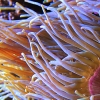

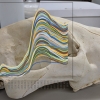

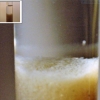

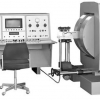
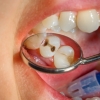
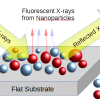
![Illustration of a thin film solar cell based on a CIGS [Cu(In,Ga)Se2] absorber layer](https://test2.spectroscopyeurope.com/sites/default/files/styles/thumbnail/public/articles/Thin_Film_30-1_F1w.jpg?itok=JQfZKNn5)

